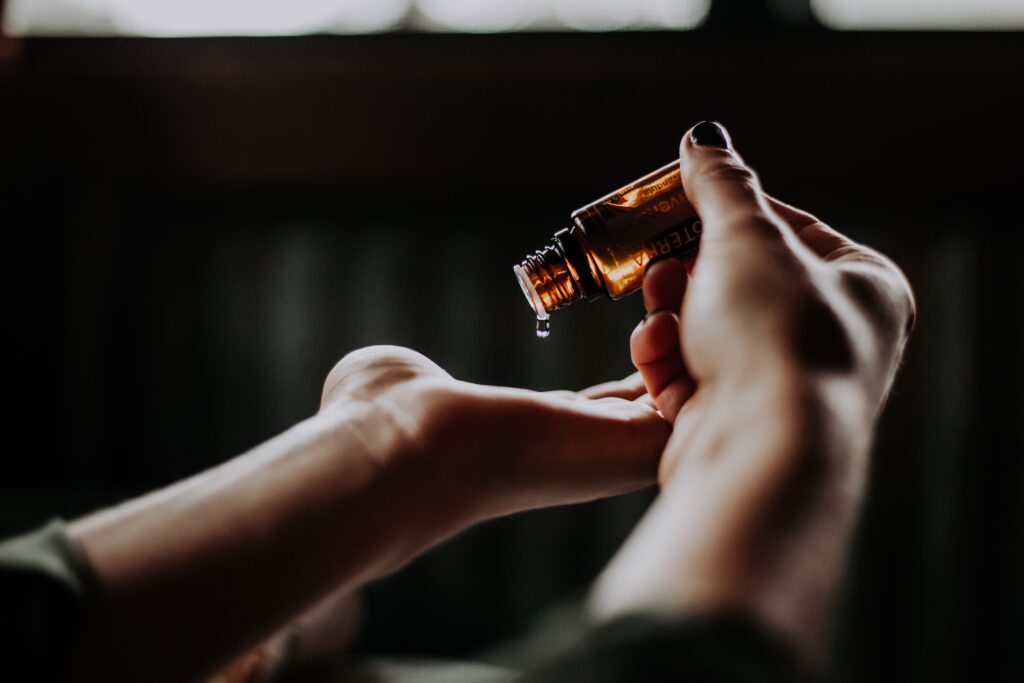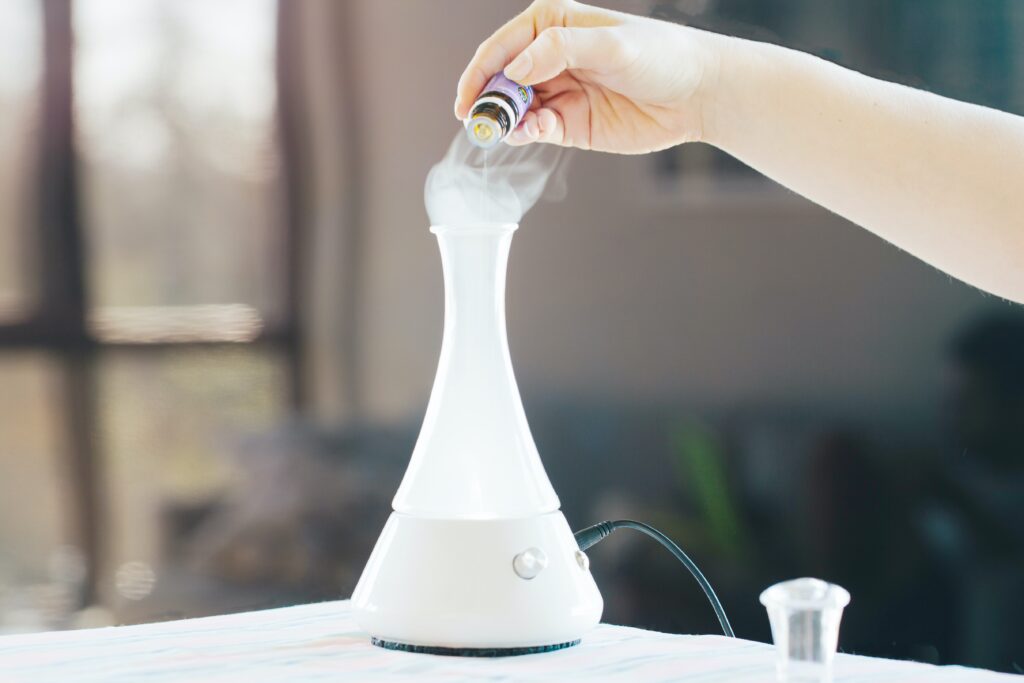
In this series of posts, I am writing about the menstrual cycle. Starting from the onset of menstruation called the Menarche through to menopause and all that happens in between!
And, importantly, how oils can help and support us through our ‘menstrual life’, how to apply the oils to suit different symptoms including oil preferences as well as some evidence to support these suggestions.
This post is going to focus on the Menarche (the onset) up to 18 years old where most young women’s menstrual cycle has regulated. The next post will focus up to the age of around 25-30 years old as it is at this time that some women have their first child.
ONS statistics (2017) reveal the average age for first time mothers is around 28 years old, first time fathers are around 33. It is commonly understood that women and girls have a ‘child-bearing age’ – and I use this term cautiously – which is between the ages of 15 and 45 and although having a baby affects a woman’s menstrual cycle, I use the term as a bench-mark only and am in no way suggesting that all women should or will or want to conceive during this time. It’s worth noting here that there are some oils which should not be used during pregnancy and breast feeding – see safety advice at the end.
Indeed, the social and cultural expectations of women and girls in terms of menstruation, body image, fertility, child-birth and menopause is something I am also going to touch upon in these posts (particularly the next one) as I believe this affects both our physical and mental experience of menstruation, in particular symptoms such as PMS.

Oils for onset:
The Menarche – also known as female puberty – usually begins at around the age of 12 although some girls will start earlier or later. During this time, a girl’s period may be irregular and unpredictable, however, often by the age of 16-18 most girls will have a regular cycle.
A lot is happening within our bodies during the menstrual cycle, the hormones oestrogen and progesterone are released which function to regulate the process. These hormones are powerful chemicals and represent a huge bodily change for girls therefore it is no wonder a wide range of symptoms can occur during the time of onset. These include:
- Cramps, pain in your lower belly or lower back
- Bloating, when your belly feels swollen
- Breakouts of spots, oily hair
- Sore breasts
- Feeling tired
- Mood swings, emotions can change quickly, you you feel sad, angry, or anxious
So how can Aromatherapy help us address some, or all, of these symptoms?
An Aromatherapist blends oils to create what is called synergy. Synergy is the ratio of blending whereby each oil has its own properties and by blending with other oils complement each other thus creating a unique blend. Your own preference is part of the process not just in terms of symptoms but aromas. You have to like the scent! There will be some aromas you will not like, and this is factored into the blend. Luckily, there are lots of oils out there so something for everyone.
The oils I have suggested, and the combinations, work well for regulating periods as well as all the symptoms outlined above. For example, cramps can often occur during the days leading up to and the first few days of your period, when your period may be heavier, this can make you feel uncomfortable, your lower abdomen may feel bloated and taut, your breasts may be sore and tender, and all this this can make you feel tired and irritable. You can see here how the symptom of cramps relates to other symptoms like emotions and sleep, and by addressing one symptom, you can address them all. This is the nature of good Aromatherapy.
Suggested oils for balance and regulation:
Basil (Ocimum basilicum) has a clean, warm aroma. It’s an inexpensive oil, rich in Phenols which have a painkilling effect, making it antispasmodic too and is described as hormone-like because it stimulates the endocrine system which can make you sweat. Basil is therefore quite a powerful essential oil and should be used with caution. For example, it can stimulate menstruation so should not be used in pregnancy (see safety advice at the end) yet in this sense it can help regulate periods. It is carminative too, and I often use it to help declutter and focus the mind; it is uplifting and cephalic, meaning it is good for headaches as well as helping you relax and sleep.
Clary Sage (Salvia sclarea) has a sweet, earthy, nutty aroma, rich in Esters. This chemical constituent is known to be balancing (oestrogen-like), calming, healing, clarifying and uplifting. Clary Sage is a gentle and safe, good for the young, old and frail, helping to relax muscles, reduce spasms, aiding nervous tension, and fluid retention. It is warming and smells incredible, and I have raved about it’s virtues in a previous post. It is sedative so good before bedtime however, be careful if consuming alcohol after use as it can induce colour dreams or nightmares!
Geranium (Pelargonium graveolens) is a beautiful, floral sweet oil, somewhat heady with citrus aromas containing Eugenol, making it good for inflammation, pain, calming painful periods and the stress that this can invoke. Geranium balances our hormones, acting on the adrenal cortex to regulate hormone function, and stimulating the circulatory system therefore improving water retention by eliminating waste and breast congestion. Traditionally used as a healing plant to ward off evil spirits, Geranium also as a strong bactericidal action and is good for congested skin, balancing sebum production (oil produced on the face). More on Geranium here.
Marjoram, sweet (Origanum majorana) is warm and spicy, containing Alcohols and Terpenes, good for pain and scanty periods therefore regulating. It is hypotensive, like Clary sage, and calms the nervous system, balancing emotions, soothing headaches. It improves poor circulation so good for fluid retention. It can be sedative which will aid sleep, bringing peace and relaxation to over-active minds.
Rose (Rosa centifolia or Rosa damascene). Both Rose varieties have similar properties in that they relieve symptoms of nervous tenson, stimulate positive emotions and regulating menstrual problems such as pain, anxiety and stress. They can also be used to aid sleep, and for men, can increase semen production. In fact, Rose is well known as an aphrodisiac and is ‘adaptogenic’ as it has properties that both relax AND stimulate. It is an expensive oil so you can buy it diluted (5% blend with a carrier oil) or if you do buy the essential oil, use it sparingly. One drop is enough.
Ylang ylang (Canaga odorata) is another sweet, heavy oil with many different chemical constituents and properties. It is a calming oil, good for depression, easing tired, cluttered and over worked minds, addressing feelings of anger, fear and frustration. It is sedative, slowing down the heart rate, regulating adrenalin production as well as balancing hormones. It has a very distinct aroma so may not suit everyone but blended well, it can help create a sense of calm and encourage a positive outlook. More on Ylang ylang here.
Suggested blends:
*Blend 1:
- 2-3 drops of Basil
- 2-3 drops of Geranium
- 1 drop of Ylang ylang
*Blend 2:
- 2-3 drops of Clary sage
- 2-3 drops of Marjoram, sweet
- 1 drop of Rose
Alternatives:
Lavender (Lavendula angustafolia) is an oil that most people are familiar with, it is inexpensive and readily available. The therapeutic benefits are that it is anti-inflammatory, anti-depressant, anti-spasmodic, bactericidal, detoxifying as well as balancing, calming, hypotensive. I would suggest substituting Lavender in either blend if you don’t have Rose, or Geranium or any of the other oils (just make sure you stick to the correct quantities/drops – up to 8 drops per blend). And because Lavender has such a familiar aroma it is often a favourite. In fact, using it on its own is excellent too.
Juniper berry (Juniperus communis) is often used for missed periods, bloating, vaginal discharge too. It is also good for the nervous system, over exhaustion, stress and tension. It is both stimulating and sedative (adaptogenic) as it can clear blocked pores, remove excess fluid and stimulate the mind yet is calming and relaxing. It is rich in Alcohols and Terpenes and can be expensive however, make sure you buy using the Latin name to ensure you are getting oil from the berry and not the twigs and leaves. Again, it can be substituted for Marjoram or Geranium in the suggested blends. One note of caution, it is a diuretic (removes water from the body) and should be avoided if you have renal disease. See my earlier post on Juniper berry.

Soothing warmth for bloating and muscle cramps:
What you will need:
- Old cotton pillowcase
- Filled hot water bottle
- Bowl
- 2-3 litres of warm water
- Essential oils (6-8 drops of Blend 1 or 2)
Method:
Fill the bowl with the warm water and add 6-8 drops of Blend 1 or 2.
Dip the pillowcase onto the water so that it scoops up the oil, you want it damp not soaking.
Wring out the excess water and turn the pillowcase inside out, wrapping it around the hot water bottle so that the oil side is on the outside and will be nearest your tummy.
Place onto your bare tummy for soothing warmth. Leave the scent of the oils on for as long as possible.
If you get oil onto your clothes, wash at 60 degrees. Also, as essential oils are corrosive, it may damage the rubber of the water bottle if it does not come with a cover.

Warming salt bath:
Baths are good for insomnia, addressing night time anxiety and stress, helping to relax muscles, cramps, as well as helping with digestive and circulatory soothing for fluid retention, nausea and constipation:
Preparing your bath:
- add Blend 1 or 2 into a cup of Epson salts (around 100g).
- Add the salts and blend to a warm bath before bedtime.
See my earlier post for the benefits of a warm bath.

Diffuser or oil burner:
Mental clarity/brain fog, fatigue, mood, headaches.
- Follow instructions on the diffuser (6-8 drops) add Blend 1 or 2.
- If you have an oil burner, add one drop from either Blend 1 or 2 (for example, 1 x Clary sage, 1 x Marjoram, 1 x Rose) into 2 teaspoons of water and light the candle underneath.
*Safety advice when using oils: Do not use the oils if pregnant as many can bring on menstruation such as Basil. If you use the oils and you get a rash, or feel faint, or unwell in any way, stop using them immediately and if symptoms persist, consult a doctor. Some oils cannot be used if taking immunosuppresents, consult your doctor or a qualified Aromatherapist before you use oils.
